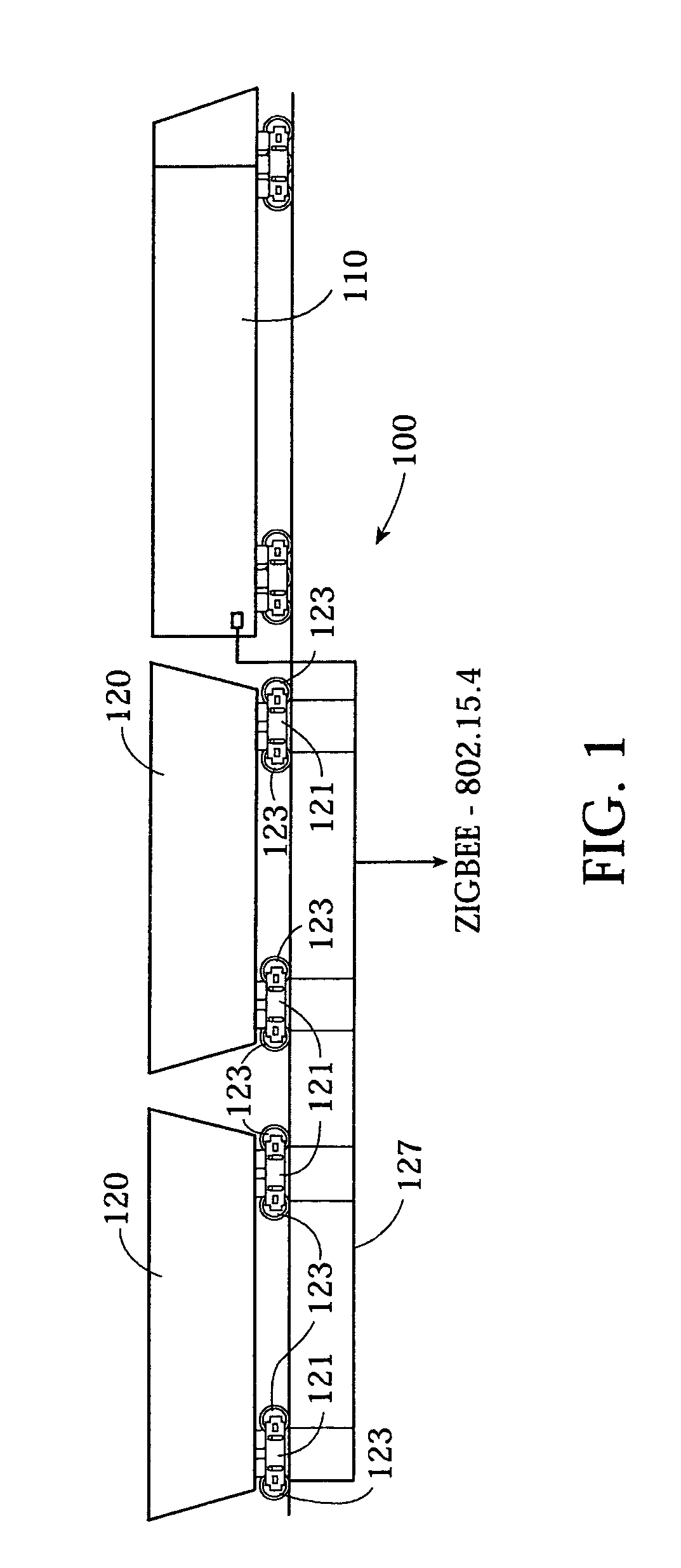Self-assembling wireless network, vehicle communications system, railroad wheel and bearing monitoring system and methods therefor
a wireless network and self-assembling technology, applied in the field of networked wireless communications, can solve the problems of inflexible system ids, failure to pick up nodes, and low reliability of commercial communication bands,
- Summary
- Abstract
- Description
- Claims
- Application Information
AI Technical Summary
Benefits of technology
Problems solved by technology
Method used
Image
Examples
example
[0297]A railcar equipped with a unit similar to unit 401, but with a computer recording its sensory data instead of a wireless network connection, was subjected to an experimental trip to determine whether the sensor data acquisition, especially using MEMS sensors, could be used to monitor rail car bearings.
[0298]FIGS. 14A and B show time-domain graphs of the raw accelerometer data from the sensor unit at ambient (the steady horizontal lines) and at speed (the noisier lines) over a time period of 1.92 seconds. This shows the degree of vibration in the sensor array.
[0299]FIGS. 15A and B show frequency domain graphs that represent Fourier transforms of the x and y axis ambient frequencies, indicating a system with no accelerations or vibrations in the analyzed range of frequencies.
[0300]FIGS. 16 A and B show Fourier transforms of the x-axis and y-axis accelerometer outputs at speed. It is apparent that there are distinct frequency peaks in the y-axis accelerations at speed, as can be ...
PUM
 Login to View More
Login to View More Abstract
Description
Claims
Application Information
 Login to View More
Login to View More - R&D
- Intellectual Property
- Life Sciences
- Materials
- Tech Scout
- Unparalleled Data Quality
- Higher Quality Content
- 60% Fewer Hallucinations
Browse by: Latest US Patents, China's latest patents, Technical Efficacy Thesaurus, Application Domain, Technology Topic, Popular Technical Reports.
© 2025 PatSnap. All rights reserved.Legal|Privacy policy|Modern Slavery Act Transparency Statement|Sitemap|About US| Contact US: help@patsnap.com



